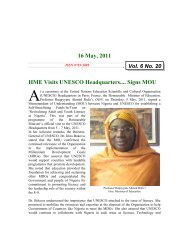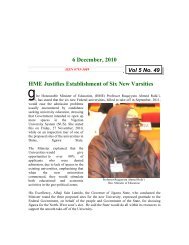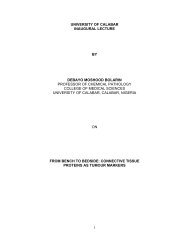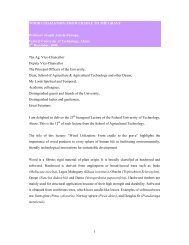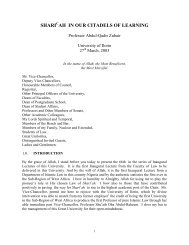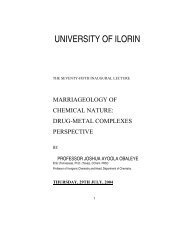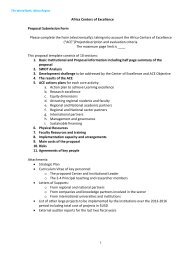THE VARIED ROLES OF SNAILS - National Universities Commission
THE VARIED ROLES OF SNAILS - National Universities Commission
THE VARIED ROLES OF SNAILS - National Universities Commission
You also want an ePaper? Increase the reach of your titles
YUMPU automatically turns print PDFs into web optimized ePapers that Google loves.
environmental quality. These gastropods were<br />
particularly suitable as they are widely distributed in<br />
rural and urban environments. They tend to have<br />
specific home ranges and habitat preferences<br />
The distribution of metals in the tissues of these slugs<br />
collected from relatively unpolluted sites and those<br />
collected from sites near disused lead and zinc mines<br />
where manganese levels are so high were compared<br />
(Irland, 1979). The comparison showed that all metals,<br />
except manganese were higher in tissue concentrations<br />
in the slugs found in the polluted areas when the<br />
concentrations in the mollusks where compared with<br />
situation in other invertebrates, it was found that<br />
molluscs accumulated higher concentrations of mental<br />
ions than other groups of invertebrates. Marigomez et<br />
al; (1986) however observed that the higher<br />
concentrations of these metals in the tissues did not<br />
translate to higher mortalities thus making the molluscs<br />
potential bioindicator tools for the environmental<br />
pollutions with metals Greville and Morgan (1990)<br />
reached similar conclusion and stated that the intrinsic<br />
variability in metal levels increase the likelihood of<br />
using gastropods as biological monitors of metal<br />
contamination in terrestrial environment.<br />
Hydrogen sulphide and methage are produced during<br />
anaerobic bacterial decomposition and when these<br />
substances come into contact with the upper oxygenated<br />
layers, they produce deleterious effects on snail.<br />
Similarly, high concentrations of zinc, copper, cadmium<br />
or lead ions, are highly toxic to snails at levels above<br />
1.0ppm. At intermediate levels (0.05 – 1.0ppm), they<br />
54




